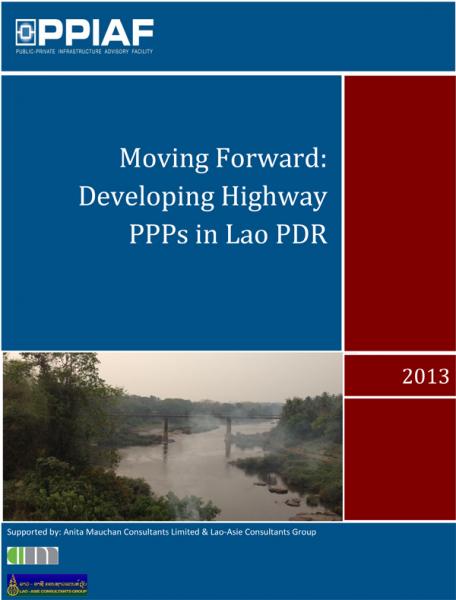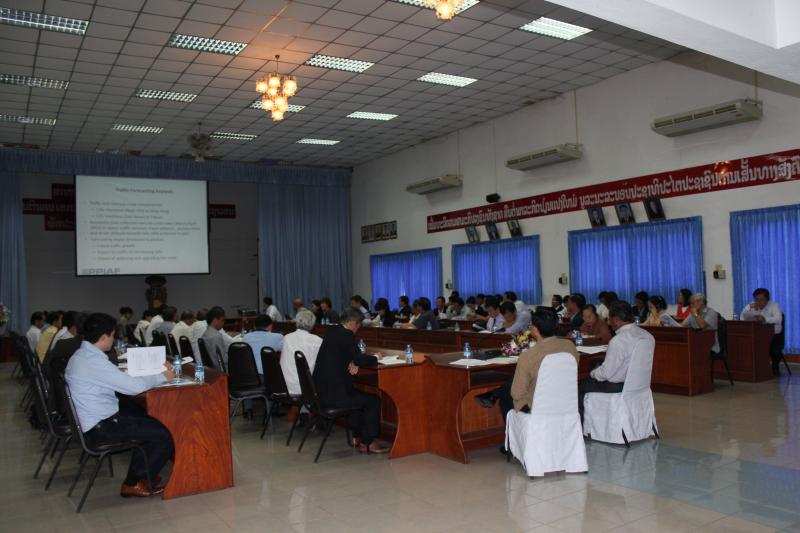Developing Highway PPPs in Lao PDR

Dear Friends,
I would like to take this opportunity to share with you an example of how PPIAF is increasingly adopting a programmatic approach to the technical assistance we provide to country governments. Since 2012, PPIAF has been assisting the Government of Lao PDR to attract much needed private sector investment and participation into the country’s under-served highway network.
Since independence in 1975, Lao PDR, a landlocked country in the heart of the Greater Mekong region, has achieved significant and rapid economic development. In recent years, the country’s GDP has grown by an annual average rate of 7%. Internal policy reforms, natural resource endowments and close proximity to some of the world’s fastest growing economies like China and Vietnam have propelled this advancement. However, the country still remains one of the poorest in the East Asia and Pacific region and according to the OECD, is one of the world’s least developed countries (DAC I). A key aspect of sustaining economic growth and alleviating poverty will be the need for increased investment and access to core infrastructure and services. In particular, the government recognizes the need to harness Lao’s geographical location and potential resource wealth by improving regional connectivity through increased investment in the country’s highway network.
Our programmatic approach to assisting the government in developing its highway network started in mid-2012 with a sector needs assessment study, which identified the upgrading of the country’s National Road 13 (NR13) as a priority investment project. Subsequently we undertook and recently completed a PPP options analysis study that assessed the viability of using a PPP model for delivering the project. The findings of this study will now inform the development of a full feasibility study which will be financed by an International Development Association (IDA) credit. Meanwhile the government will seek a transaction advisor to undertake a full structuring and market sounding exercise to prepare the project for investment. At this stage, we estimate that around $150-$200m of private capital will be sought from private sector investors. We feel PPIAF has played a vital role in identifying this important project and without our early-stage assistance, the potential for private sector investment may not have been realized.
During the 9-12 months period that the feasibility study is under preparation, PPIAF will remain engaged with the Government of Lao PDR to help build the institutional readiness and capacity that is required for the government to become an effective grantor to a PPP project for the NR 13 and hopefully many other projects. This program of institutional support is envisaged to encompass the following areas:

Stakeholder Workshop
during presenation of Final Report
- Regulatory Support: Development of a tolling/road-user policy. Tolls will be a major funding source for the project, but the government will need assistance to ensure that a policy is adopted that ensures the tariff regime is reasonable, equitable and underpinned by clearly stated principles (e.g. discount regimes for local residents living near toll plazas)
- Legal Support: A review of the adequacy of the country’s legal framework to govern a PPP in the road sector. This will be done in close co-ordination with the Asian Development Bank who are assisting the Ministry of Public Investment in developing an over-arching PPP framework
- Institutional Support: Development of a suite of guidance documents and tools to help government to make key decisions through the project cycle – this will include development of a cost-benefit analysis framework for assessing the business case for highway investment projects and an affordability analysis tool which will assess the fiscal impact of these projects
The experience in Lao PDR not only demonstrates the importance of a programmatic approach but is also an example of how I want PPIAF to be interfacing directly with governments in trying to help build institutional strength so that governments can be viewed by the private sector as a credible counterparty to PPP projects. The implementation of the activity was co-managed by the PPIAF team and encompassed a series of missions and stakeholder workshops led by the PPIAF team. In fact, PPIAF undertook much of the analysis and study preparation, with consultancy input coming only on the technical (traffic and engineering) aspects. Through this interaction we have been able to demonstrate our sector and PPP expertise and gain the trust of the government. I believe these kinds of interactions will become more frequent and more fruitful as we gradually increase our regional presence and further strengthen our role as a global center of expertise in the field of PPP.
Best wishes
James Close

